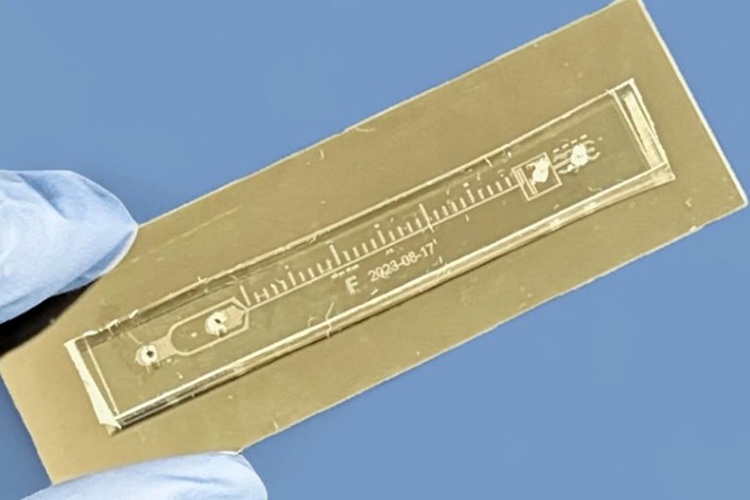Capillary Electrophoresis Evaluated for Hemoglobinopathy Testing
|
By LabMedica International staff writers Posted on 25 May 2015 |
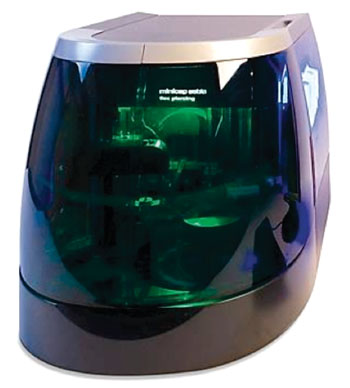
Image: The Minicap Flex Piercing capillary zone electrophoresis system (Photo courtesy of Sebia).
The detection of structural hemoglobin (Hb) variants and thalassemia has become increasingly important in clinical laboratories of all countries with a large influx of immigrants over the past 10 years.
Guidelines for hemoglobinopathy screening not only recommend the use of quantitative techniques for thalassemia detection, they also stress the use of a confirmatory method when an Hb variant is detected. In an ideal setting, both techniques can be met by a combination of high-performance liquid chromatography (HPLC) and capillary zone electrophoresis (CZE).
Scientists at the University Hospital Leuven (Belgium) and their colleagues evaluated a suitable stand-alone method for hemoglobinopathy screening of approximately 50 clinical samples a week. The studied the analytical performance of a CZE and set up a comparison with two well-established HPLC methods.
Capillary zone electrophoresis was performed using the Minicap Flex Piercing CZE system (Sebia; Norcross, GA, USA). The instrument is equipped to resuspend, lyse, separate, and analyze whole blood samples for variants collected in ethylenediaminetetraacetic acid (EDTA) tubes. The lysed red cells are electrophoresed in alkaline buffer (pH 9.4) allowing separation to be directed by pH and endosmosis. Detection of eluting hemoglobin species is accomplished using the change in absorbance at 415 nm. CZE does not require daily calibration, but normal HbA and HbA2 migration controls are analyzed daily through each capillary before additional quality control (QC), or patient samples are run to ensure proper charge and function of both capillaries. The two well-established HPLC methods were the Bio-Rad Variant Classic and the Bio-Rad D-10 instruments (Bio-Rad Laboratories; Hercules, CA, USA).
The analytical performance was acceptable for the determination of HbA, HbA2, HbS, and HbF, with an imprecision equal to or less than 2.0%. Method comparison showed a linear correlation for HbA2, HbF, and HbS measurements. Clinical concordance was acceptable when comparing CZE and HPLC. Hb variant presumptive identification was evaluated by analyzing seven samples with confirmed heterogeneous or homogeneous presence of Hb variants: two HbC, one HbD, one HbE and HbA2'. One sample was compound heterogeneous for HbS and HbC. On the Minicap Flex Piercing, a minimal overlap between HbC and HbA2 was found.
The authors concluded that as HPLC methods have the advantage of a great precision in detection of a large number of variants, it has the disadvantage of a complex elution pattern that may be difficult to interpret for many routine chemistry laboratories. The Minicap Flex Piercing showed similar analytical performance compared to previous published work using CZE. As for HPLC, CZE gives only a provisional identification of variant hemoglobins, and confirmation by an alternative method based on a different principle is needed. The study was published in the June 2015 issue of the International Journal of Laboratory Hematology.
Related Links:
University Hospital Leuven
Sebia
Bio-Rad Laboratories
Guidelines for hemoglobinopathy screening not only recommend the use of quantitative techniques for thalassemia detection, they also stress the use of a confirmatory method when an Hb variant is detected. In an ideal setting, both techniques can be met by a combination of high-performance liquid chromatography (HPLC) and capillary zone electrophoresis (CZE).
Scientists at the University Hospital Leuven (Belgium) and their colleagues evaluated a suitable stand-alone method for hemoglobinopathy screening of approximately 50 clinical samples a week. The studied the analytical performance of a CZE and set up a comparison with two well-established HPLC methods.
Capillary zone electrophoresis was performed using the Minicap Flex Piercing CZE system (Sebia; Norcross, GA, USA). The instrument is equipped to resuspend, lyse, separate, and analyze whole blood samples for variants collected in ethylenediaminetetraacetic acid (EDTA) tubes. The lysed red cells are electrophoresed in alkaline buffer (pH 9.4) allowing separation to be directed by pH and endosmosis. Detection of eluting hemoglobin species is accomplished using the change in absorbance at 415 nm. CZE does not require daily calibration, but normal HbA and HbA2 migration controls are analyzed daily through each capillary before additional quality control (QC), or patient samples are run to ensure proper charge and function of both capillaries. The two well-established HPLC methods were the Bio-Rad Variant Classic and the Bio-Rad D-10 instruments (Bio-Rad Laboratories; Hercules, CA, USA).
The analytical performance was acceptable for the determination of HbA, HbA2, HbS, and HbF, with an imprecision equal to or less than 2.0%. Method comparison showed a linear correlation for HbA2, HbF, and HbS measurements. Clinical concordance was acceptable when comparing CZE and HPLC. Hb variant presumptive identification was evaluated by analyzing seven samples with confirmed heterogeneous or homogeneous presence of Hb variants: two HbC, one HbD, one HbE and HbA2'. One sample was compound heterogeneous for HbS and HbC. On the Minicap Flex Piercing, a minimal overlap between HbC and HbA2 was found.
The authors concluded that as HPLC methods have the advantage of a great precision in detection of a large number of variants, it has the disadvantage of a complex elution pattern that may be difficult to interpret for many routine chemistry laboratories. The Minicap Flex Piercing showed similar analytical performance compared to previous published work using CZE. As for HPLC, CZE gives only a provisional identification of variant hemoglobins, and confirmation by an alternative method based on a different principle is needed. The study was published in the June 2015 issue of the International Journal of Laboratory Hematology.
Related Links:
University Hospital Leuven
Sebia
Bio-Rad Laboratories
Latest Clinical Chem. News
- Chemical Imaging Probe Could Track and Treat Prostate Cancer
- Mismatch Between Two Common Kidney Function Tests Indicates Serious Health Problems
- VOCs Show Promise for Early Multi-Cancer Detection
- Portable Raman Spectroscopy Offers Cost-Effective Kidney Disease Diagnosis at POC
- Gold Nanoparticles to Improve Accuracy of Ovarian Cancer Diagnosis
- Simultaneous Cell Isolation Technology Improves Cancer Diagnostic Accuracy
- Simple Non-Invasive Hair-Based Test Could Speed ALS Diagnosis
- Paper Strip Saliva Test Detects Elevated Uric Acid Levels Without Blood Draws
- Prostate Cancer Markers Based on Chemical Make-Up of Calcifications to Speed Up Detection
- Breath Test Could Help Detect Blood Cancers
- ML-Powered Gas Sensors to Detect Pathogens and AMR at POC
- Saliva-Based Cancer Detection Technology Eliminates Need for Complex Sample Preparation
- Skin Swabs Could Detect Parkinson’s Years Before Symptoms Appear
- New Clinical Chemistry Analyzer Designed to Meet Growing Demands of Modern Labs

- New Reference Measurement Procedure Standardizes Nucleic Acid Amplification Test Results
- Pen-Like Tool Quickly and Non-Invasively Detects Opioids from Skin
Channels
Clinical Chemistry
view channel
Chemical Imaging Probe Could Track and Treat Prostate Cancer
Prostate cancer remains a leading cause of illness and death among men, with many patients eventually developing resistance to standard hormone-blocking therapies. These drugs often lose effectiveness... Read more
Mismatch Between Two Common Kidney Function Tests Indicates Serious Health Problems
Creatinine has long been the standard for measuring kidney filtration, while cystatin C — a protein produced by all human cells — has been recommended as a complementary marker because it is influenced... Read moreMolecular Diagnostics
view channel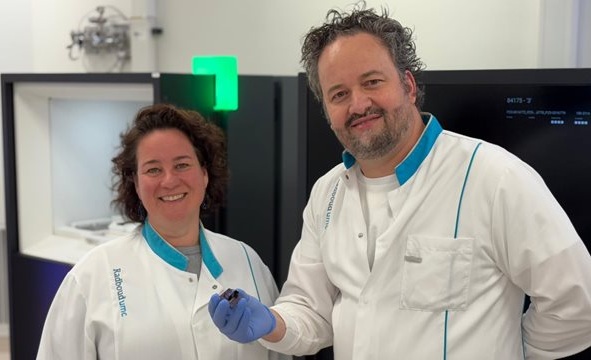
New Genetic Test Enables Faster Diagnosis of Rare Diseases
Rare disease diagnosis often involves a long and uncertain search for the underlying genetic cause. Traditional testing requires multiple separate analyses, although many patients remain without answers.... Read more
Urine Test Detects Inherited Neuropathy Missed by Genetic Screening
Sorbitol dehydrogenase (SORD)-related neuropathy is one of the most common inherited nerve disorders, yet diagnosis often lags because current genetic screens frequently miss the causal gene.... Read moreImmunology
view channel
Chip Captures Cancer Cells from Blood to Help Select Right Breast Cancer Treatment
Ductal carcinoma in situ (DCIS) accounts for about a quarter of all breast cancer cases and generally carries a good prognosis. This non-invasive form of the disease may or may not become life-threatening.... Read more
Blood-Based Liquid Biopsy Model Analyzes Immunotherapy Effectiveness
Immunotherapy has revolutionized cancer care by harnessing the immune system to fight tumors, yet predicting who will benefit remains a major challenge. Many patients undergo costly and taxing treatment... Read moreMicrobiology
view channel
Rapid Assay Identifies Bloodstream Infection Pathogens Directly from Patient Samples
Bloodstream infections in sepsis progress quickly and demand rapid, precise diagnosis. Current blood-culture methods often take one to five days to identify the pathogen, leaving clinicians to treat blindly... Read more
Blood-Based Molecular Signatures to Enable Rapid EPTB Diagnosis
Extrapulmonary tuberculosis (EPTB) remains difficult to diagnose and treat because it spreads beyond the lungs and lacks easily accessible biomarkers. Despite TB infecting 10 million people yearly, the... Read more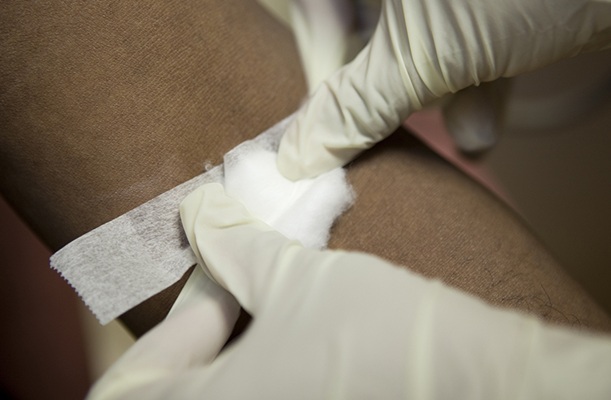
15-Minute Blood Test Diagnoses Life-Threatening Infections in Children
Distinguishing minor childhood illnesses from potentially life-threatening infections such as sepsis or meningitis remains a major challenge in emergency care. Traditional tests can take hours, leaving... Read more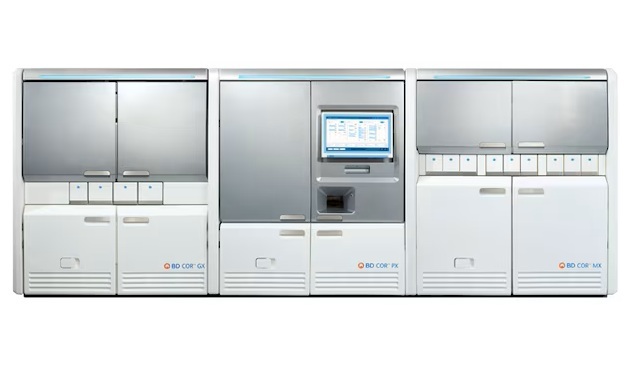
High-Throughput Enteric Panels Detect Multiple GI Bacterial Infections from Single Stool Swab Sample
Gastrointestinal (GI) infections are among the most common causes of illness worldwide, leading to over 1.7 million deaths annually and placing a heavy burden on healthcare systems. Conventional diagnostic... Read morePathology
view channel
Blood Test and Sputum Analysis Predict Acute COPD Exacerbation
Chronic obstructive pulmonary disease (COPD) remains a major contributor to global illness, largely driven by cigarette smoking and marked by irreversible lung damage. Acute exacerbations can accelerate... Read more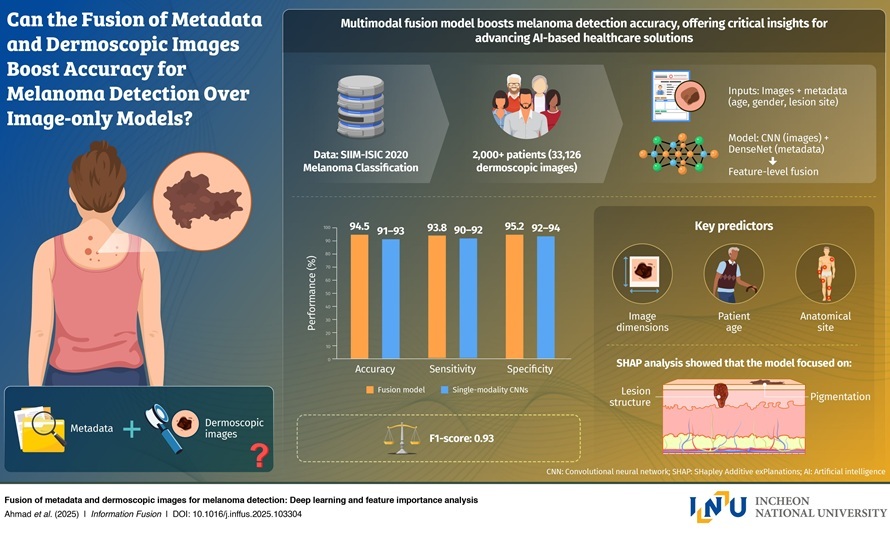
AI Tool to Transform Skin Cancer Detection with Near-Perfect Accuracy
Melanoma continues to be one of the most difficult skin cancers to diagnose because it often resembles harmless moles or benign lesions. Traditional AI tools depend heavily on dermoscopic images alone,... Read more
Unique Immune Signatures Distinguish Rare Autoimmune Condition from Multiple Sclerosis
Myelin oligodendrocyte glycoprotein antibody–associated disease (MOGAD) is a rare autoimmune disorder in which the immune system attacks the myelin sheath in the central nervous system. Although symptoms... Read moreTechnology
view channel
AI Saliva Sensor Enables Early Detection of Head and Neck Cancer
Early detection of head and neck cancer remains difficult because the disease produces few or no symptoms in its earliest stages, and lesions often lie deep within the head or neck, where biopsy or endoscopy... Read more
AI-Powered Biosensor Technology to Enable Breath Test for Lung Cancer Detection
Detecting lung cancer early remains one of the biggest challenges in oncology, largely because current tools are invasive, expensive, or unable to identify the disease in its earliest phases.... Read moreIndustry
view channel
Abbott Acquires Cancer-Screening Company Exact Sciences
Abbott (Abbott Park, IL, USA) has entered into a definitive agreement to acquire Exact Sciences (Madison, WI, USA), enabling it to enter and lead in fast-growing cancer diagnostics segments.... Read more















